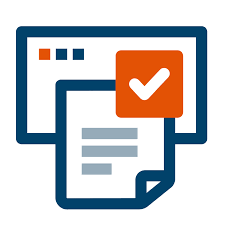Business Drivers for Laserfiche Adoption
- Claude Schott

- Jan 25, 2022
- 2 min read

We frequently write about local agencies leveraging Laserfiche for service delivery on this blog. Less often, we explore businesses that also use Laserfiche to transform digitally. However, over the past five years, we saw more companies understand enterprise content management's value. Hence, we thought it would be beneficial to explore the business drivers for modern Laserfiche adoption.
Within businesses today, for staff is looking to overcome barriers, encourage collaboration and implement new efficiencies. Increasingly, Laserfiche provides the information platform either through integrations with business-critical
applications or a repository for the organization's records. Below we'll examine some functions that are both driving adoption and being enabled by it:
Records management and compliance- Businesses have their industry or regulatory mandates for information governance and compliance. Highly regulated industries such as Banking, for example, retain account statements, unaltered, for five to seven years. Other industries have different retentions, but most sectors expect consistent, secure, and efficient information governance - organizations cannot achieve this without ECM systems, such as Laserfiche.
Business process automation- Information drives processes in every organization. It's pretty common for organizations to increase efficiencies and re-task employees to more strategic work. Workflows such as invoice processing, employee hiring, and client onboarding move the operation forward using the data, free from the document and auto-populated in the ERP system.
WFH (Work from home)- If nothing else, the pandemic has taught us the fantastic flexibility of the worldwide workforce and the technology that makes it possible. Digital information is an essential requirement when enterprises look to enable remote working. Without well-managed information served from ECM systems, this could not have happened. In this use case, ECM might be "transparent" to the average worker and acts as an enabler to perform the business tasks and often one that the end-user doesn't ever see.
Interoperability- Systems integration is a critical need within most organizations. As legacy systems are retired and new systems implemented, ECM provides a managed environment to control data capture and synchronizations, indexing, and workflows.
Cybersecurity and privacy- Compliance with data privacy regulations such as GDPR increases companies' need to prove compliant. Storing information securely while ensuring only the right people within an organization can view, edit, and create content is a core function provided by ECM systems.
Enterprise access- Today's systems users require information and data access across the business. Federation capabilities remove the need for users to toggle between applications, reduce errors from copy/paste between systems, and eliminate the need for user access in multiple systems.
If any of these use cases or functions of Laserfiche ECM seem intriguing, please contact me to learn more at cschott@cps247.com.



Comments